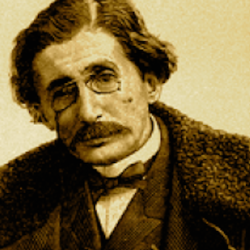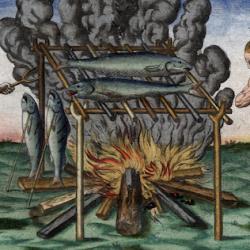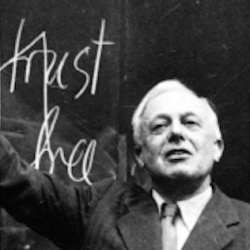Sociologists working from various theoretical and political perspectives have worried that American society is fragmenting into two separate worlds. Our cities aren’t single anymore. Cities are dual, and the tale of late modernity is a tale of two cities.
Jock Young (Vertigo of Late Modernity) isn’t convinced. He admits that “the setting up of barriers, of exclusion” is characteristic of late modern society (31). But that is only part of the story. He points out that the upper and upper middle classes maintain their lifestyles only by relying on the services of the poor (nannies, cooks, house cleaners, etc.). Boundaries exist, but they are not impermeable; they are permeated (at least in one direction) on a daily basis. He cites studies that indicate that inner city ghettos are not cut off from American values and the American dream, but are awash in Americana. Foods, entertainment, media, styles cross the boundaries. We are far more culturally homogeneous, he argues, than the two-city thesis suggests.
Instead of a simple pattern of exclusion, Young discovers a society “where massive cultural inclusion is accompanied by systematic structural exclusion,” a society that “has both strong centrifugal and centripetal currents; it absorbs and rejects” (32).
The institutions of inclusion that create a common culture are powerful: “the mass media, mass education, the consumer market, the labour market, the welfare state, the political system, the criminal justice system. Each of these carries with it a notion of universal values, of democratic notions of equality and reward and treatment according to circumstance and merit. Each of them has expanded throughout the century and has been accompanied by a steady rise in the notion of citizenship encompassing greater and greater parts of the population in terms of age, class, gender and race. And within the period of late modernity the mass media, mass education and the consumer and labour markets have, in particular, increased exponentially” (32).
Yet each of these sources of common cultural values is structurally exclusive: “the labour market incorporates more and more of the population (the entry of women into paid work being the prime example) yet . . . precisely at the time when work is seen as a prime virtue of citizenship, well paid, secure and meaningful work is restricted to a tiny minority. The criminal justice system is on paper a paragon of equal rights. The British Police and Criminal Evidence Act 1984, for example, governs among other things the powers of stop and search. It is a veritable cameo of neo-classicist notions of equality of citizens in the face of the law and the need for ‘democratic’ suspicion, yet on the streets, in practice, policing is indisputably biased in terms of race and class. . . . Politics is an hourly interjection of radio and television, the mass media speak on our part for ‘the common good,’ and ‘the average’ man and woman – they even parade and interview joe public with regularity yet the vast majority of people feel manifestly excluded from political decision-making. Indeed even the tiny minority of active party members often feel impotent and uninfluential. Mass education is the major transmission belt of meritocratic ideas, it is the nursing ground of equal opportunity yet . . . its structures serve to reproduce class divisions, and to exacerbate resentment. Lastly the mass media has a pivotal role; it has grown immensely and occupies a considerable part of waking life. In 1999, for example, the average person in England and Wales watched 26 hours of television, listened to 19 hours of radio every week, and read, on top of that, mass circulation newspapers and magazines. That is 40% of one’s waking life spent watching TV or listening to the radio, rising to 60% of your free time if you are lucky enough to be in work. The lower down the class structure the citizen – the more socially excluded if you want – the more mass media is consumed. Thus, paradoxically, cultural inclusion is the inverse of structural inclusion. The media carry strong notions of the universal citizen and they, of course, depict the other institutions: the world of consumption, work, education, politics and criminal justice. Yet despite this overall commitment to social order, the very stuff of news is the opposite: disorder, breakdown, mayhem, injustice” (32-33).
Young argues that we don’t live in a dual city. Rather late modernity is a complex “bulimic” process of intake and expulsion.











